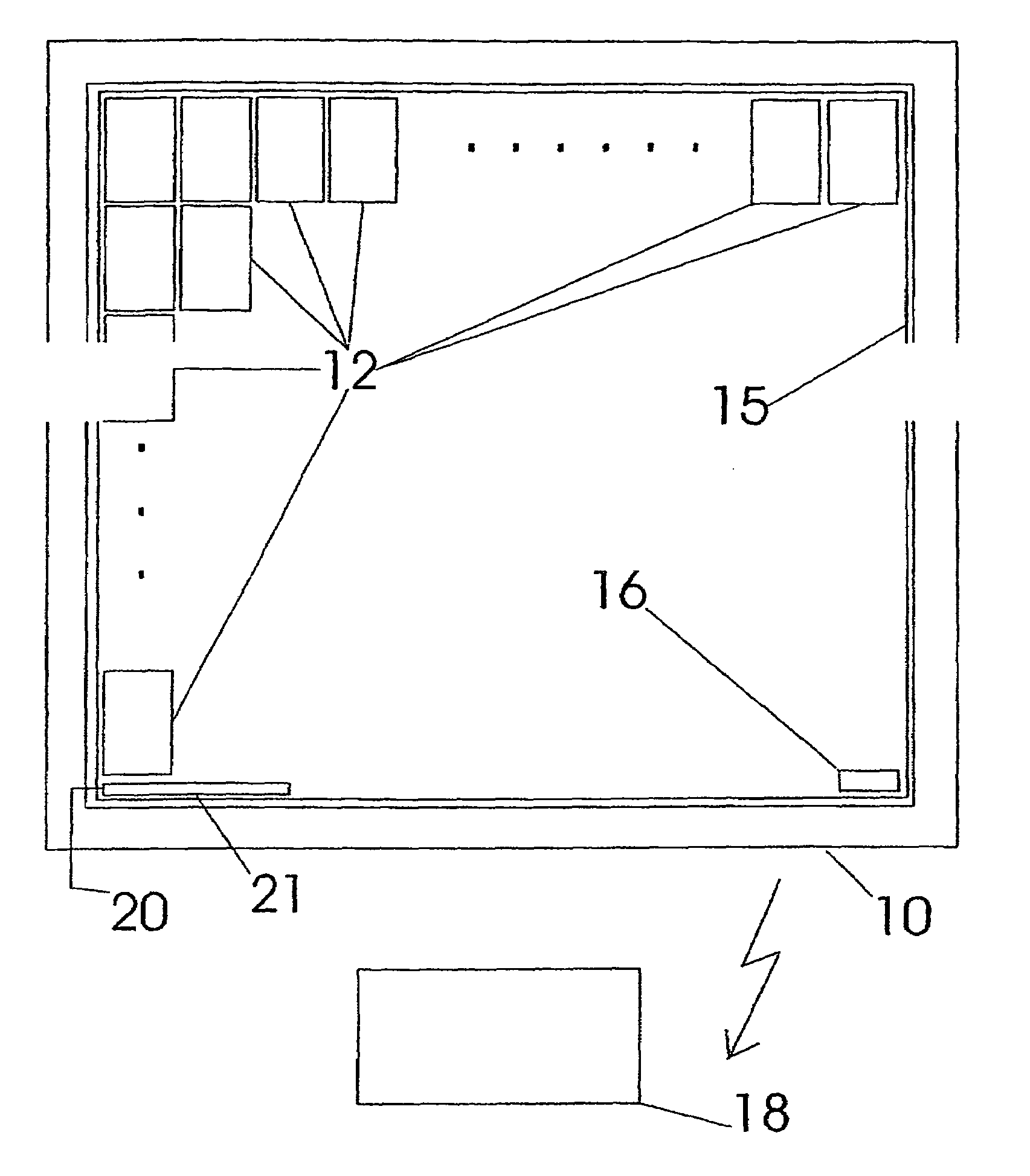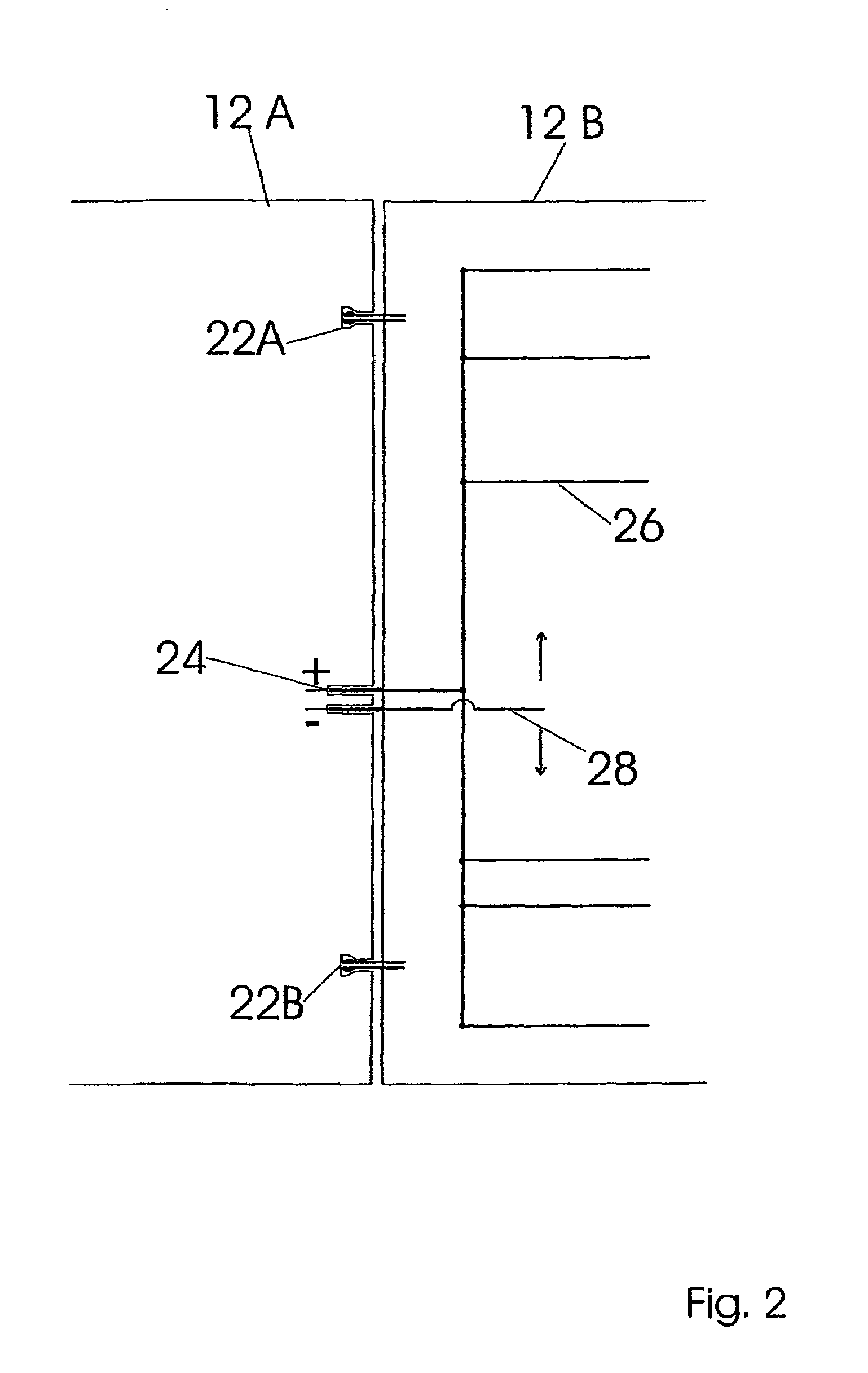Micromirror array
a micromirror array and array technology, applied in the direction of solar heat collector controllers, solar radiation concentration, moving/orienting solar heat collectors, etc., can solve the problem of production costs at least in the same order, and achieve the effect of simple dimensioning and design, wide tilt angle range, and simple manufacturing
- Summary
- Abstract
- Description
- Claims
- Application Information
AI Technical Summary
Benefits of technology
Problems solved by technology
Method used
Image
Examples
Embodiment Construction
[0041]Identical reference symbols denote identical or functionally identical components in the figures.
[0042]With reference to FIG. 1 and in addition with reference to FIG. 10 (cross section), a panel 15 according to the invention is shown containing a large number of individual modules 12 which are arranged like a matrix (in the form of an array), with the external dimensions of the panel 15 corresponding approximately to the dimensions of the visible area of a window surface, which is arranged within a window frame 10. As FIG. 10 additionally shows, the panel 15 is arranged in the interior between an outer glass pane 90 and an inner glass pane 92. The individual modules 12 themselves once again contain a large number of optically reflectively acting micromirrors, which are likewise arranged like a matrix in regular rows and columns on a common mounting surface, although this is not illustrated in FIG. 1, in order to improve the clarity. As can likewise be seen from FIG. 1, the ind...
PUM
 Login to View More
Login to View More Abstract
Description
Claims
Application Information
 Login to View More
Login to View More - R&D
- Intellectual Property
- Life Sciences
- Materials
- Tech Scout
- Unparalleled Data Quality
- Higher Quality Content
- 60% Fewer Hallucinations
Browse by: Latest US Patents, China's latest patents, Technical Efficacy Thesaurus, Application Domain, Technology Topic, Popular Technical Reports.
© 2025 PatSnap. All rights reserved.Legal|Privacy policy|Modern Slavery Act Transparency Statement|Sitemap|About US| Contact US: help@patsnap.com



